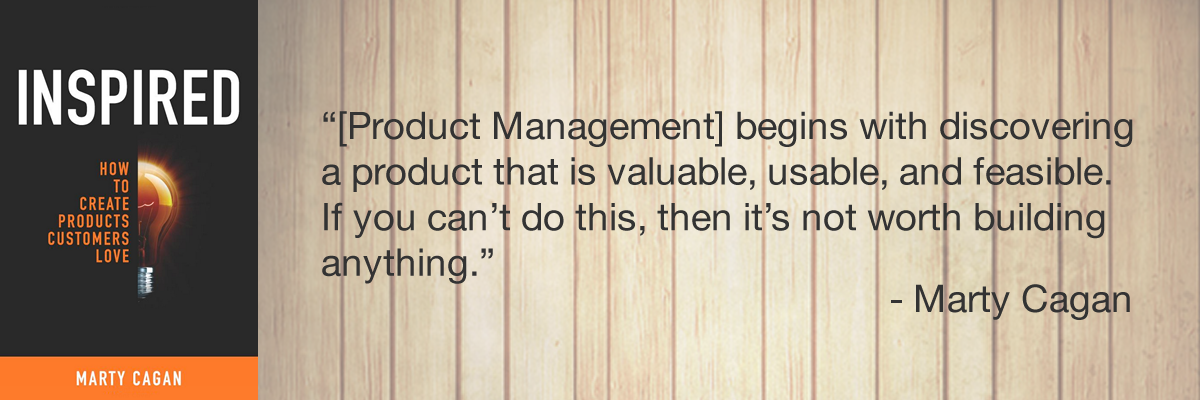
Are you a new Product Manager? We’re launching a new course to provide you with the basics you’ll need to succeed in your new role.
In his book, Inspired, Marty Cagan defines a Product Manager as someone who “discovers a product that is valuable, usable and feasible.” In the context of software development, “product management” includes anything delivered to an end user: a web app, new app features, a website, mobile app, desktop client, and other online services.
Marty has a free PDF (download it here) that describes the common tasks a Product Manager performs:
- Identifying and assessing opportunities: when you’re working on a software team, ideas come from everywhere. This includes internal ideas, but more importantly it addresses external ideas from current customers, potential customers, and other people in your target market. The hardest part about being a Product Manager is collecting all of these ideas and then evaluating which ones are worth pursuing.
- Deliver the right product at the right time: finding a product idea (or direction) that people want is just one half of the equation. The other side is technical feasibility. With your team’s current engineering resources and timeline could you build what’s required?
- Outlining a product strategy and roadmap: once you’ve built and released a particular feature, your team is going to want to know “What’s next?” A Product Manager helps define a vision for the product’s future, both internally (to the team) and externally (to customers).
- Manages the product, not people: one interesting feature of the Product Manager is she doesn’t manage people, she manages products (or features). This means the Product Manager needs to work collaboratively with each facet of the business, like the engineering + design team, the business team, and customers.
- Is a representative of the product internally: a Product Manager champions the product (its needs and its future) inside the company. This means showing the value of the product for customers and for the company’s bottom line.
- Is a representative for the customer: likewise, the Product Manager fights for the needs of users! The Product Manager is the representative for the user in team meetings and during executive review. They collect user feedback through surveys, interviews, and usage data and paint an accurate picture of who the customer is, why they’re using the product, and what they want to see next.
My favorite visual representation of a Product Manager is this illustration by Martin Eriksson:

As a Product Manager, you sit at the crossroads of three different functions:
- Business: is there a profitable market for this product? This is the first and most important question.
- Technology: is it technically possible (and affordable) to create this product?
- User Experience: once we’ve built the product, how can we make this a product people love to use, and share with their friends?
Clearly, it’s a special kind of person that succeeds in the Product Management role:
- They need a high emotional IQ (to empathize with users)
- They need to understand what’s technically possible
- They need to know what kinds of products / features will drive sales.
Are you that kind of person?
That’s it for today! The next lesson delves into the topic of identifying product opportunities in the market. You can subscribe to all five (free) lessons here.
If you’re ahead of the curve and want to get started, feel free to learn more about how software can help you become a better Product Manager.

